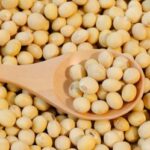
On February 24, 2022, Japanese Agricultural Standards (hereinafter referred to as “JAS”) for Textured Soy Protein Products were established. On the same day, it was added to the JAS list on the website of the Ministry of Agriculture, Forestry and Fisheries, and we would like to summarize the outline and key points for labeling below.
Summary of background
In the fall of 2020, the discussion on JAS (discussed mainly by Otsuka Foods Co., Ltd.) started and after, soliciting opinions on the JAS draft in November 2021, the current establishment was accomplished. “Technical standards for certification” and “inspection methods” are shown in line with the establishment of “Standards” for textured soy protein products. The standard defines the requirements for two food products: “Soy meat product” and “Prepared soy meat product”.
“Soy meat product” and “Prepared soy meat product”
According to the definitions in the Standard, the differences between the two products can be summarized as follows.
| Soy meat product | Prepared soy meat product | |
|---|---|---|
| Processing | Processing soy meat ingredients to have meat-like characteristics unique to the product. | Processing soy meat ingredients to have meat-like characteristics unique to the product. |
| Ingredients | No animal ingredients or processed products made from animal ingredients shall be used as ingredients from primary ingredients to tertiary ingredients. | No animal ingredients (excluding milk and edible poultry eggs) or processed products made from animal ingredients (excluding seasoning) shall be used as ingredients from primary ingredients to tertiary ingredients. |
| Soy protein content rate | Soy protein content rate must be at least 10 %. | Soy protein content rate must be at least 1%. |
| Amino acid score of ingredients | Soy meat ingredients with an amino acid score of 100 must be used. | – (N/A) |
The reason behind the setting of the standard for amino acid score is that it is important to claim that “all essential amino acids can be taken in good balance” “for the purpose of suggesting to consumers a new way of taking soy protein”.
About labeling
According to the definitions in the Standard, the labeling standard can be summarized as follows.
| Soy meat product | Prepared soy meat product | |
|---|---|---|
| Labeling items | “大豆ミート食品 (EN: Soy meat product)” or “大豆肉様食品(EN: meat-like product from soy)” must be written in an easily visible location on the container or packaging.* | “調製大豆ミート食品 (EN: Prepared soy meat product)” or “調製大豆肉様食品 (EN: Prepared meat-like product from soy)” must be written in an easily visible location on the container or packaging.* |
| An explanation of the fact that the product is not meat (“no meat used”, “meat-free”, etc.) must be provided in an easily visible location on the container or packaging. | ||
| Labeling methods | – (N/A) | |
| Manner of Labelling, etc. | – (N/A) | |
| Prohibited labeling items | – (N/A) | |
* For processed food for business use, it can be indicated on invoices, delivery slips, etc. or specifications.
As for the point that textured soy protein products needed to be labeled as “No meat used ” or “meat-free”, the “Q&As (FAQs) on the Labeling of Plant-Based (Plant-Derived) Foods” published by the Consumer Affairs Agency last summer will probably be a good reference for that. The following is a summary of the relevant Q&As.
Q&As (FAQs) on the Labeling of Plant-Based Foods
The following is an excerpt from the same Q&A published on August 20, 2021, as notes regarding the labeling of “meat” (alternative meat) from plant-based foods. (The definition of “plant-based food” is “a product made to resemble livestock products, such as meat, or marine products such as fish, using ingredients (not including livestock products or marine products) that are mainly derived from plants. Even if a product contains additives of animal origin, if the main ingredient is from plant, it is included in “plant-based (plant-derived) food.”)
| Example of labeling | Note |
|---|---|
| Labeling “大豆肉 (EN: soy meat)” or “ノットミート(EN: non-meat)” in product names | The labeling as a whole must not mislead the general consumer into believing that the product is meat when it is not. Therefore, apart from the product name, it must be labeled “Made with soy,” “Contains soy ingredients” “Does not contain meat,” “Meat-free”, etc. |
| Labeling of hamburger steaks made from soy alternative meat as “大豆からつくったハンバーグ(EN: hamburger steak made from soy)” in the product name | If the rate of used alternative meat is not 100%, for example, the rate of used alternative meat must be indicated separately from the product name, so that general consumers are not misled into believing that the rate of used alternative meat is 100% when it is not. |
| “Labeling of alternative meat made from soy as “大豆ミート (EN: soy meat)” with the words “100%植物性 (EN: 100% plant-based)” added to the product name | The labeling as a whole must not mislead general consumers into believing that all ingredients, including food additives, are plant-based when they are not. Therefore, for example, apart from the product name, it must be labeled “Ingredients are plant-based (excluding food additives). |
The above are notes for all labeling, including containers and packaging. And the following are the notes regarding “labeling of ingredient names” in collective labeling. It is necessary to note that terms including “meat” and “egg” cannot be used in ingredient names for plant-based foods.
Q. How should ingredient names for collective labeling be listed for plant-based(derived from plant) foods? For example, would it be possible to label it as “Alternative meat” or ” Liquid egg”?
A. Food Labeling Standards stipulate that “the most common name must be used” for products’ ingredient names. As for names of plant-based (plant-derived) foods as ingredients, “Soybeans”, or “Soy-based processed food”, etc. is acceptable for foods made from soybeans. As for ingredient names for plant-based (plant-derived) foods, we believe that terms including meat and eggs cannot be considered as “common names” at present.
The above is an overview of JAS for textured soy protein products and notes on the labeling of plant-based foods. As a related food, the standardization for JAS of “foods suitable for vegetarians or vegans” is also under consideration. If you are handling soybeans or other plant-based foods, it would be a good idea to consider this situation.
References
- JAS for Textured Soy Protein Products (the Ministry of Agriculture, Forestry and Fisheries)
- Q&As (FAQs) on the Labeling of Plant-Based Foods (CAA)
Share/Like/Follow:
Newsletter Signup
We issue monthly e-newsletters, which provide you with the latest updates on food labeling/regulations in Japan.
If you want to make sure to not miss any issue, please click below.
Related Service
Research Services on Ingredients & Food Labeling -For the Japanese Market-
We verify the conformity of ingredients and additives with the standards for use in Japan based on specifications such as formulation lists. We also verify the conformity of the proposed labeling of ingredient names, nutrients, etc. with the labeling standards based on specifications such as formulation lists.

Label bank Co., Ltd. CEO (Founder)
Born in Japan. Working on solving various issues related to food labeling operations. Also regularly gives lectures for various organizations in Japan.
Co-author of ‘Latest edition: Guide book Food Labeling Law and related business practical points – from scratch (Japanese version only)’ (DAI-ICHI HOKI CO., LTD/2019).





